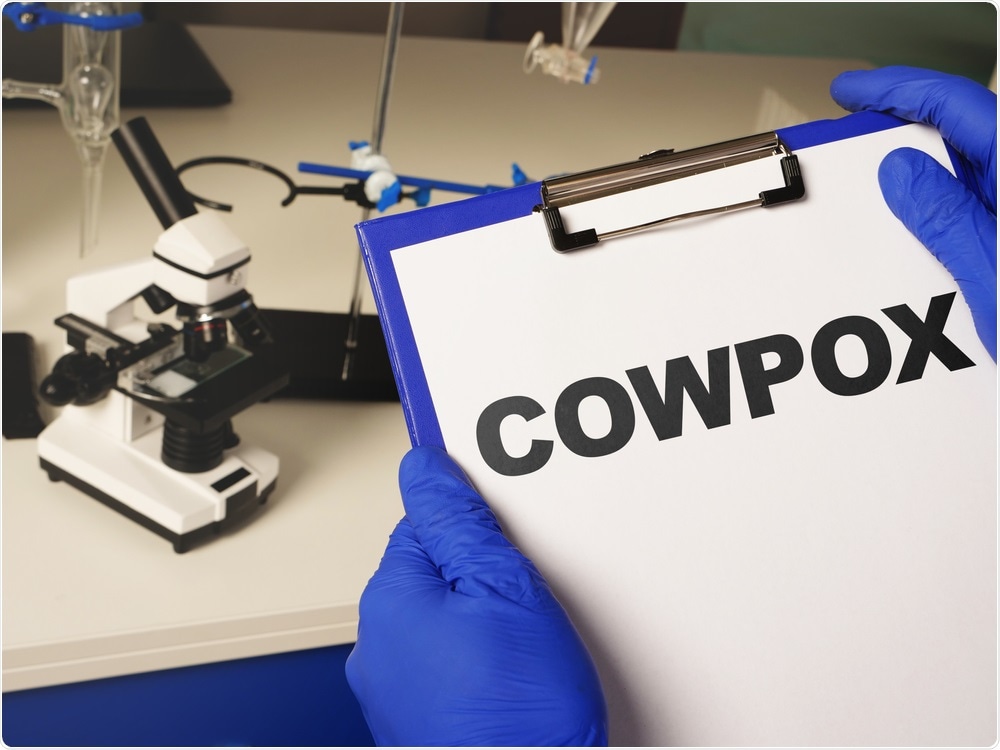According to a new study published in the Science Advances journal, the removal of a single gene makes poxviruses—a lethal family of viral infections that spread from animals to humans—harmless.

Image Credit: Jack_the_sparow/Shutterstock.com
During this breakthrough study, investigators from the Spanish National Research Council and the University of Surrey examined the immune response of cells to these poxviruses. Poxviruses, like monkeypox and cowpox, can transmit to humans from infected animals, leading to swollen lymph nodes, fever, skin lesions, and even death.
A genetic material in viruses supports these pathogens to outsmart host cells, allowing the replication and the transmission of the infection. Within the body, cells contain molecules that detect the presence of viruses—at times by recognizing their genetic material—and warn the immune system of an upcoming infection.
Unlike other viruses, poxviruses are extremely unique in that they have huge DNA genomes that are exclusively replicated in the cell cytosol, a region of the cell full of sensors. But scientists are still unclear how poxviruses manage to remain undetected.
In this study, scientists used ectromelia virus (ECTV), which resembles human smallpox, a member of the poxvirus family responsible for causing mousepox. ECTV are known to spread through the lymphatic system of mice to important organs, in which large replication of the virus occurs, leading to instant death of the animal.
During their analyses, the team detected a gene called viral Schlafen (vSLFN), which was identified to inhibit the cell response to the virus genome, rendering the infection silent to the immune system.
Interestingly, disabling this one specific gene made it impossible to detect the infection, triggering a powerful immune response that safeguarded the animals against doses that are one million times higher than the normal lethal quantity.
After the vSLFN was removed, the researchers observed that animals that had the modified virus were protected from intravenous, respiratory, and subcutaneous infection and all of them survived.
The team also found that the protection was controlled by interferon, a familiar molecule that has strong anti-viral properties, and by natural killer cells, which play a crucial role in the host-rejection of virally infected cells.
According to the researchers, these discoveries will provide a better understanding of how individuals can fight microbial infections and will help enhance the safety and efficacy of anti-cancer agents, vaccines, and gene therapies based on poxviruses.
Viruses, although minuscule, are very complex agents with very sophisticated strategies contained in their genetic material. But it is also this same genetic material that makes them vulnerable to cell recognition. The removal of vSLFN gene protected animal against mousepox, and we believe that that we may see the same results for other poxviruses.”
Dr Carlos Maluquer de Motes, Senior Lecturer, Department of Molecular Virology, University of Surrey
Dr Maluquer de Motes continued, “Our findings reveal the importance of activating the molecules responsible for the detection of the genetic material of microbes in the fight against viruses. In addition, they also suggest that mimicking the action of vSLFN may be a valid strategy to prevent auto inflammatory and autoimmune diseases that are caused when the genetic material of cells is sensed by the immune system, promoting a reaction.”
Viral inhibition of DNA sensing prevents the induction of the type I IFN response and complements another viral mechanism to sequester type I IFN through the secretion of soluble IFN decoy receptors. This highlights the importance of the type I IFN response in the control of immunity.”
Dr Antonio Alcami, Spanish National Research Council
Source:
Journal reference:
Hernáez, B., et al. (2020) Viral cGAMP nuclease reveals the essential role of DNA sensing in protection against acute lethal virus infection. Science Advances. doi.org/10.1126/sciadv.abb4565.